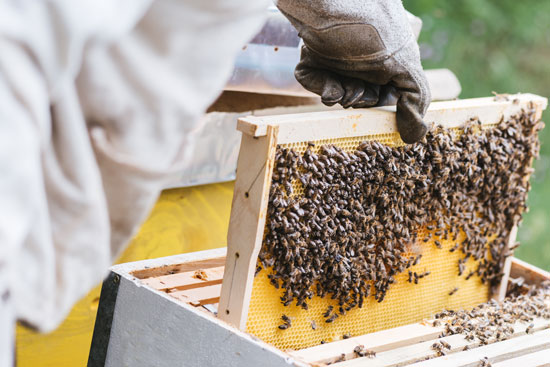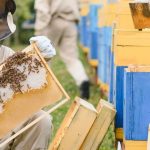π‘ How Much Space for Beekeeping?
When venturing into beekeeping, space is a critical consideration. The recommended space for a beehive is approximately 2 square feet. This allows for proper hive management and gives bees enough room for foraging. However, it’s essential to adhere to local regulations, ensuring that your chosen space complies with zoning requirements and promotes the well-being of both the bees and your neighbors.
π How Often Do Beekeepers Get Stung?
Beekeeping inevitably involves encounters with bees, and stings are part of the experience. The frequency of stings varies among beekeepers and depends on factors such as experience, protective gear, and bee temperament. Novice beekeepers may experience more stings as they learn, but with time and proper precautions, beekeepers can significantly reduce the occurrence of stings.
π° How Much Do Beekeepers Make Per Hive?
The income from beekeeping per hive is influenced by multiple factors. Commercial beekeepers with large operations may earn more per hive due to economies of scale. On average, a hive can produce around 50 to 100 pounds of honey per year. Beekeepers often diversify their income streams by offering pollination services, selling beeswax, or creating hive-related products. Success in beekeeping is a combination of skill, knowledge, and effective hive management.
π οΈ How Labor Intensive Is Beekeeping?
Beekeeping requires a significant investment of time and effort. Regular hive inspections, disease management, and seasonal tasks contribute to the labor intensity. Beginners should be prepared to spend several hours per week on hive maintenance, especially during peak seasons. Despite the demands, many find the hands-on nature of beekeeping to be rewarding and enjoyable.
πΈ How Much Money Do Beekeepers Make a Year?
Beekeeper income varies widely based on factors such as scale, location, and business model. Small-scale beekeepers may earn a modest income, while larger commercial operations can generate substantial revenue. The annual income per beekeeper can range from a few thousand to tens of thousands of dollars. Success in beekeeping involves strategic planning, continuous learning, and adapting to market dynamics.
π’ Is Beekeeping Legal in My City?
Before embarking on your beekeeping journey, it’s crucial to ensure that beekeeping is legal in your city. Check local ordinances and regulations governing beekeeping practices. Some cities have specific guidelines regarding hive placement, proximity to property lines, and hive quantity. Understanding and adhering to local laws not only keeps you on the right side of the law but also fosters positive relationships with neighbors and local authorities.
π Conclusion: Navigating the Beekeeping Landscape
Embarking on a beekeeping venture is a fascinating journey filled with challenges and rewards. Understanding the space requirements, preparing for the occasional sting, exploring income potentials, recognizing the labor intensity, and ensuring legal compliance are crucial aspects of successful beekeeping. By delving into these key questions, you’ll be better equipped to cultivate thriving hives and contribute to the vital role of bees in our ecosystem. π―π
Related:










